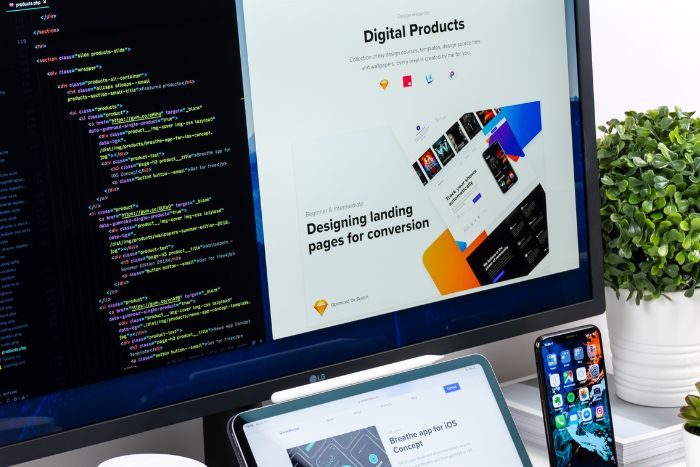Do you know the importance of having a Minimum Viable Product? When launching a product on the market, there are two possible scenarios. The first is that your product is successful and that your customers accept it; the second is that your product is a resounding failure and is gradually discarded.
If the second scenario occurs, you are facing a big commercial error and must solve it as soon as possible. An MVP can prevent you from making these big mistakes, and building on them is quite a common IT practice in modern businesses.
In short, an MVP is a product development method focused on creating a viable product. These products have minimal features to be evaluated among the first buyers to get feedback or ideas for future developments.
Why should you start thinking about building a Minimum Viable Product?
A Viable Minimum Product is extremely useful because you can deliver faster than any other complete product. In this way, you will be able to notice how it is received by buyers and detail the first opinions, which are the most valuable.
In addition to the above, an MVP could also give you certain benefits if all goes well. On a business level, anything good you can bring to your business is welcome, and an MVP could:
It attracts investors
One good thing about MVPs is that they show customers’ interest. This can attract different investors who will also be interested in your product and your business. In a nutshell, this will persuade investors to invest resources in your company.
Has value
With a Minimum Viable Product, you can focus on all the key benefits you offer your potential customers. In this way, you can add some details to its development for improvement, which would also improve its reception.
You save money
When creating an MVP, the costs are much lower. This is because by including the product’s core features, developers and designers spend less time and resources building it. In addition, not only do you save money, but you can also quickly launch it on the market.
It’s iterative
As we already mentioned, you can go little by little adding details to your product as time goes by. In this way, you will see if the slight changes they make are liked instead of risking everything in a drastic change.
Tips for building a Minimum Viable Product
If you need to learn how to build an MVP from scratch, don’t worry; we will help you with that. For that, we are going to give you a list of the best tips, which are:
Think about your target audience
In any commercial strategy, it is vital to identify the target audience to take a step toward success. For this, you should be able to get answers to the following questions:
- Who are you developing the app for?
- Is there a specific market/region you are targeting?
- What do these people have in common? (Demographics, motivations, values, etc.)
By getting these answers, it’s easier to get started on building your MVP. This step is essential, so pay attention to it, and you will succeed in marketing outright.
What is the timeline?
It is especially important to launch your Minimum Viable Product at the right time; it cannot be random. It would help if you considered growing competition and changing business needs and user demands.
If you don’t launch at the right time, included features can reduce values. At the same time, the MVP features can also be accommodated within the budget.
What are the most valuable features?
Your MVP’s features should be the most valuable to the end customer. You can identify those characteristics by finding answers to the following questions:
- What are the pain points or problems experienced by the target audience?
- What features can be developed to address pain points?
- Why would they want the features to be developed?
You can get some other answers, but that will depend on the product you are developing. You must always be attentive to development and details.
Could you keep it simple?
A Minimum Viable Product includes only the basic functions. To select them, it is helpful to start an MVP software design with a product discovery process by surveying customers.
Create prototypes
This step is vital for the development of MVP. A prototype shows the structure and flow of the application. Wireframing ensures a smooth and convenient structure for a user. Also, it will help you link different components of the MVP software design.
Pre-launch and market the product
When the prototypes are ready, the ideal is to talk with the technical team. The team can report a problem or potential dawn. They can say how long it will take to build a feature and comment on other important things before they start marketing it.
Is there scalability?
Planning for scalability in advance is an especially useful thing to do. This goes along with what we mentioned about adding some future changes to your product. Therefore, you must make your Minimum Viable Product scalable to transform it into something else if necessary.
Have you already noticed how good the MVPs are? Imagine spending 18 months developing a high-quality product; imagine how much you will invest. What would you do if, at the time of its launch, you realized that nobody would want to buy or need it? Developing a good MVP is one of the best things you can do.
Final thoughts
MVPs are the best way to reduce risks when launching a new product. Thanks to them, you can get customer feedback and make necessary changes. If you keep these tips in mind, you will successfully build your Minimum Viable Product. Remember that the key is to start with something small and then grow.




